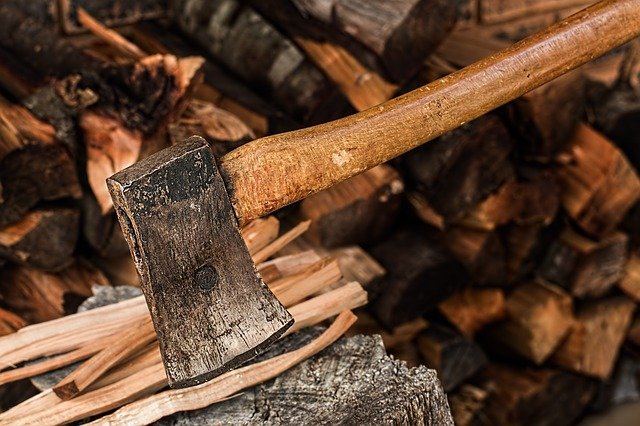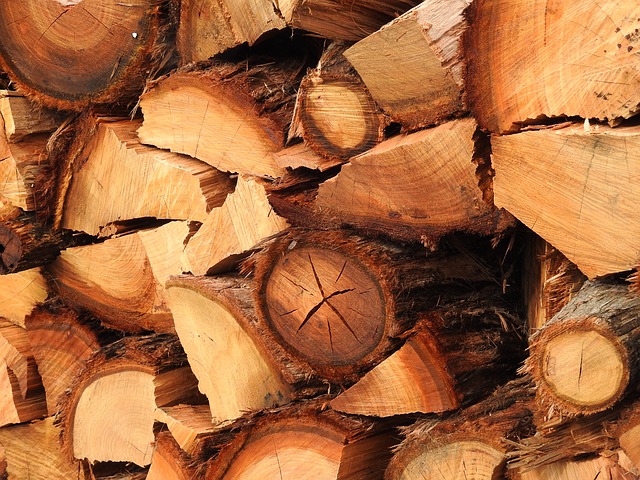This article has been taken from “Homeowner’s Complete Guide To The Chainsaw” By “Brian J. Ruth & Jen W. Ruth”. Splitting and Stacking Firewood is gathered and used for fuel. “Emergency Tree Removal Service” briefs you about the process on this.
1. Measure swing distance.
I start by placing the cutting edge of the maul right where I want to strike the log. It is almost like aiming a rifle. This also helps me measure the distance from where I will be standing when I strike the log. From here, I step back about a third of a step so I will lean forward a little to add power as I complete the swing.
2. Hold maul horizontally.
Next, I hold the maul horizontally near waist level, elbows comfortably bent with one hand at the base of the handle and the other next to the head.

3. Raise maul overhead.
Flexing my knees slightly, I abruptly raise the maul overhead, extend my arms, and rise up on my toes to gain maximum energy. My right hand slides down the handle to meet my left hand.
4. Make downward swing forceful.
With a forceful downward swing, I bend at my waist and my knees to get my whole body into the action. Notice the marching stance and the long reach. I find this the best way to give momentum to the maul’s head and power it into the wood with authority.
5. Accelerate the maul on impact.
When the maul head hits the wood, I continue to power it downward by lowering my shoulders and hands, and snapping my wrists downward.
6. Concentrate on follow through.
The wood splits apart as I concentrate on follow through and where I want the blow to finish-the bottom of the log.
7. Finish with knees crouched.
Note my final position: I am crouching with my knees bent slightly. My hands-and the maul’s handle-end up low enough that a mis-strike would drive into the ground, not into my feet or legs.
Stacking and Seasoning Firewood
The best wood for burning has been seasoned (dried). Green, freshly cut wood
has a moisture content of about sixty percent. It will smolder when lit, produce a good deal of smoke, and little flame, much of the fire’s heat is wasted evaporating the water. Burning unseasoned wood will also cause a rapid buildup of creosote in the flue of your fireplace or stove and increase the risk of a chimney fire.
Split logs usually should be seasoned to about twenty percent moisture content by drying them for six to twelve months. Wood cut, split, and stacked properly in early spring should be ready by fall.

Wet wood should be stacked in a sunny spot that is exposed to the wind, well away from the house, and supported off the ground as shown in the drawing below. This allows air to circulate around the wood to prevent rot, and discourages termites and other wood-eating insects from crawling into the woodpile, or worse, into your house.
Here is a stacking tip: mix the sizes (large, small) as you stack because you will need kindling and large logs to build a fire. This method also helps fill the crevices, creating a steadier pile.
Once the logs look dark and withered, and their ends have cracks that radiate from the center, they are probably seasoned. One way to test for dryness is to tap a couple of logs together. Dry logs make a sharp, ringing sound; you will hear a dull thud if the wood is green. Once the wood is dry, cover the stack with a tarp to shed rain and snow.
One other thing: If you want to know how much your firewood (and all your hard labor) is worth, you see listed in your area. Fire wood is usually sold in your area. Firewood is usually sold by the cord or partial cord (sometimes called a face cord or rick). When comparing prices, be sure to find out if it is seasoned and what type of wood it is (Hardwood? Softwood? Species? Lengths? Split?).
One full cord equals a stack that is eight feet long. Four feet high, and four feet deep (128 cubic feet of stacked firewood). One partial cord, a face cord or rick, equals a stack that is eight feet long, four feet high, and anywhere from one to three feet deep (So the logs will fit in your fireplace or stove).
Continue reading on Manual Sharpening of Chainsaws